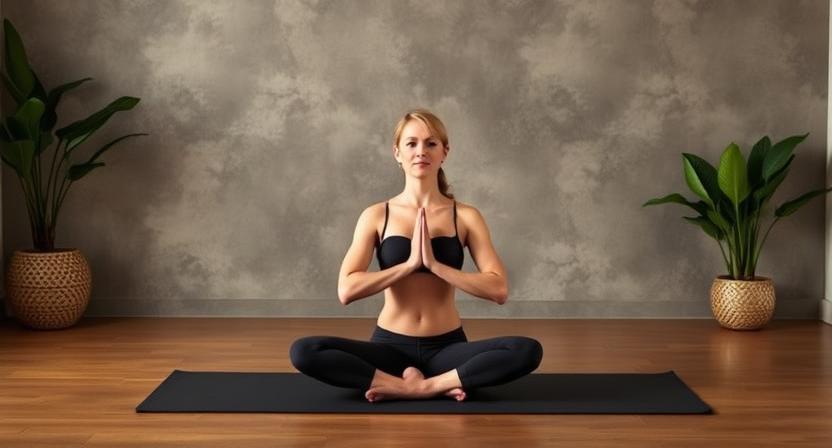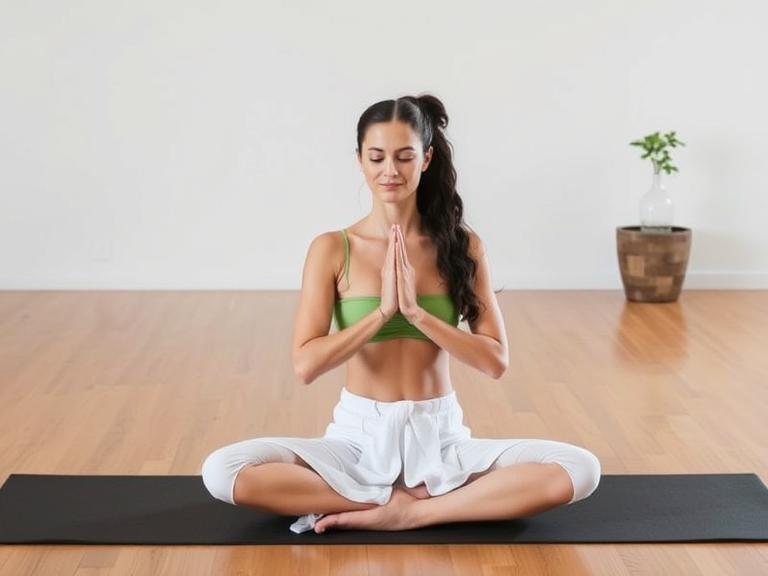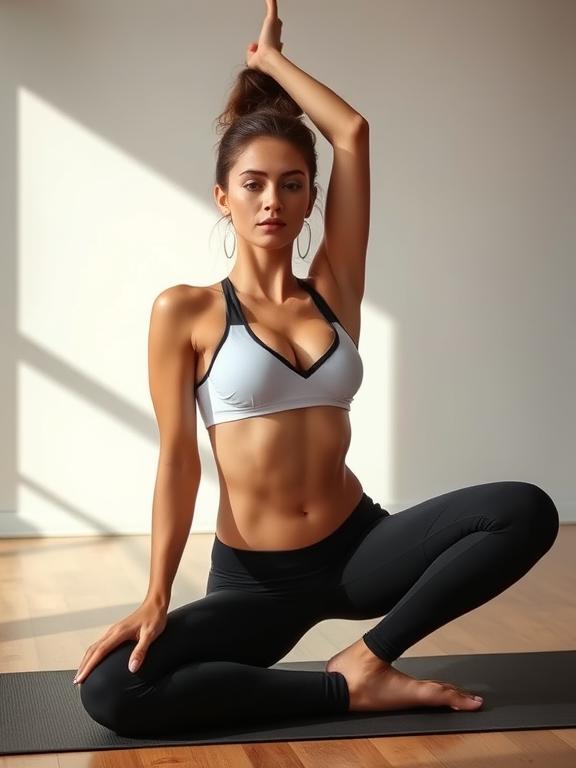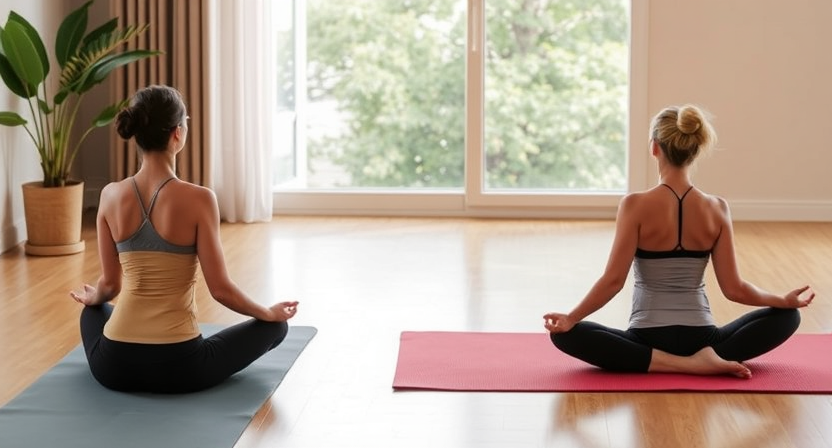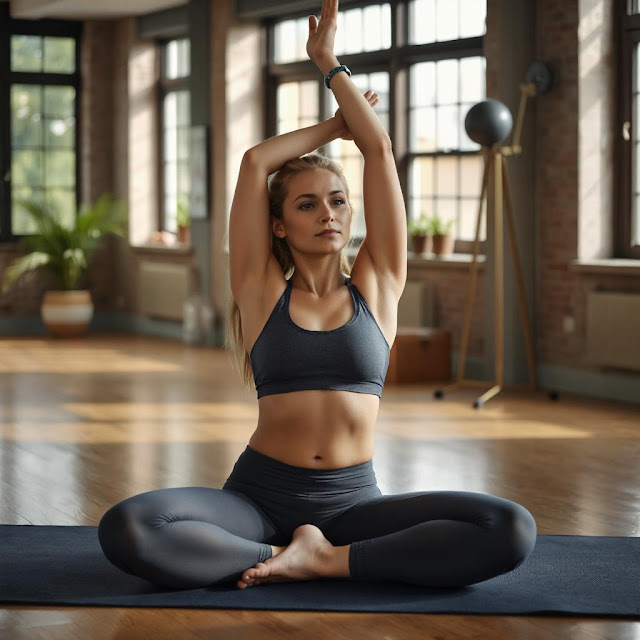In today’s fast-paced world, we often chase intensity—whether it’s in our workouts, our careers, or our social lives. Amidst the hustle, it’s easy to overlook the healing power of stillness. That’s where Yin Yoga comes in: a gentle, meditative practice that invites us to slow down, tune in, and let go.
But what exactly is Yin Yoga, and how does it differ from the more dynamic styles of yoga we often see in studios? Let’s explore this quiet yet powerful practice and discover how it can transform not just your body, but your entire approach to life.
In today’s fast-paced world, we often chase intensity—whether it’s in our workouts, our careers, or our social lives. Amidst the hustle, it’s easy to overlook the healing power of stillness. As recommended by top health coaches worldwide, Yin Yoga is a powerful antidote to modern stress and a cornerstone of holistic wellness
The Basics: What Is Yin Yoga?
Yin Yoga is a slow-paced style of yoga that involves holding passive poses—often seated or lying down—for extended periods, typically ranging from 2 to 7 minutes. Unlike more vigorous forms of yoga that target the muscles, Yin Yoga works deeper, focusing on the connective tissues: ligaments, fascia, joints, and even bones.
Developed in the late 1970s and popularized in the West by teachers like Paulie Zink, Paul Grilley, and Sarah Powers, Yin Yoga blends ancient Taoist principles with traditional Hatha Yoga postures. It draws inspiration from Chinese medicine, energy meridians, and the concept of yin and yang—the dual forces that exist in all aspects of life.
While yang yoga (like Vinyasa or Ashtanga) emphasizes movement, heat, and strength, yin yoga emphasizes stillness, cooling, and introspection. It’s the perfect counterbalance to the more active forms of exercise and a valuable tool for modern stress relief.
Key Principles of Yin Yoga
To understand Yin Yoga more deeply, it’s helpful to look at its three foundational principles:
- Come into the pose at an appropriate depth
Unlike dynamic yoga, Yin doesn’t require deep or intense stretching. You’re encouraged to find your edge—a place where you feel sensation but not pain—and remain there comfortably. - Remain still
Once you find that edge, the next step is to be still. Avoid fidgeting or adjusting unless necessary. Stillness allows the connective tissue to respond and creates space for inner awareness. - Hold the pose for time
Yin poses are held for several minutes, often supported by props like blocks, bolsters, or blankets. The long holds give the body time to access deeper layers of tissue and help calm the nervous system.
Yin Yoga vs. Restorative Yoga
It’s easy to confuse Yin Yoga with Restorative Yoga, as both are slow and use props. However, the two serve different purposes:
- Yin Yoga aims to stress the connective tissue gently to maintain or increase flexibility.
- Restorative Yoga is about full relaxation, often using more props to eliminate effort entirely.
In Yin, you might feel a deep stretch or mild discomfort; in Restorative, you’re encouraged to feel almost nothing at all. Think of Yin as active stillness, while Restorative is passive rest.
Physical Benefits of Yin Yoga
Though it may look deceptively simple, Yin Yoga offers profound physical benefits:
- Increased Flexibility: The long holds target fascia and connective tissue, enhancing joint mobility.
- Improved Circulation: Stimulation of the fascia helps increase blood flow to areas often ignored in other forms of yoga.
- Joint Health: Regular Yin practice can help maintain the health of joints by gently stressing them in a safe, controlled way.
- Better Posture: As tension in the hips, spine, and shoulders releases, natural alignment improves.
- Injury Prevention: By keeping tissues supple, Yin can support recovery and prevent overuse injuries.
Mental and Emotional Benefits
Perhaps even more profound than the physical benefits are the mental and emotional shifts that occur through Yin practice:
- Enhanced Mindfulness: Holding stillness for minutes at a time encourages presence and body awareness.
- Stress Reduction: Yin Yoga activates the parasympathetic nervous system, lowering cortisol levels and promoting relaxation.
- Emotional Release: Many practitioners report emotional shifts—like sadness, joy, or release—during long holds. This is due to the fascia’s link to stored emotional trauma.
- Improved Patience and Tolerance: Yin teaches you to sit with discomfort and observe rather than react. This practice often translates into daily life.
A Typical Yin Yoga Practice
A Yin Yoga class might include anywhere from 5 to 10 poses in a 60-minute session. Here’s what you can expect:
- Quiet Entry: You may begin lying on your back in stillness or with light breathwork.
- Long Holds: Poses like Butterfly, Dragon, Caterpillar, and Sphinx are held quietly for 3–5 minutes or longer.
- Supportive Props: Blocks, bolsters, and blankets are often used to help maintain stillness without strain.
- Mindful Breathing: While there’s no vigorous pranayama, gentle awareness of the breath is encouraged.
- Closing Meditation or Savasana: The practice often ends in deep rest, allowing the body and mind to integrate.
Common Yin Yoga Poses
Here are a few staple poses you’ll often see in a Yin class:
- Butterfly Pose: A seated forward fold with soles of feet together, targeting the hips and lower spine.
- Sphinx or Seal Pose: A backbend done on the belly to open the front body and stimulate the spine.
- Dragon Pose: Similar to a low lunge, it targets hip flexors and quads.
- Caterpillar: A seated forward fold for the spine and hamstrings.
- Reclining Twist: Helps release the spine and digestive system.
Each pose invites the body to open gradually and the mind to settle deeply.
Who Should Try Yin Yoga?
Yin Yoga is suitable for all levels, including beginners, seniors, athletes, and anyone seeking balance from high-intensity workouts or stress. It’s especially beneficial if:
- You struggle with flexibility or tight joints.
- You’re recovering from burnout or injury.
- You’re experiencing emotional stress or anxiety.
- You simply want to slow down and reconnect with your body.
That said, individuals with acute injuries, severe joint issues, or certain connective tissue disorders should consult a healthcare provider before beginning.
Final Thoughts: The Power of Stillness
Yin Yoga isn’t about doing more—it’s about doing less with awareness. It reminds us that growth doesn’t always come through pushing, but sometimes through surrendering. It’s a practice of patience, presence, and profound self-care.
Whether you’re a seasoned yogi or just curious about slowing down, Yin Yoga offers a nourishing space to listen inward, release long-held tension, and cultivate resilience from within. In a world that often values speed and productivity, Yin invites you to pause, soften, and simply be.
